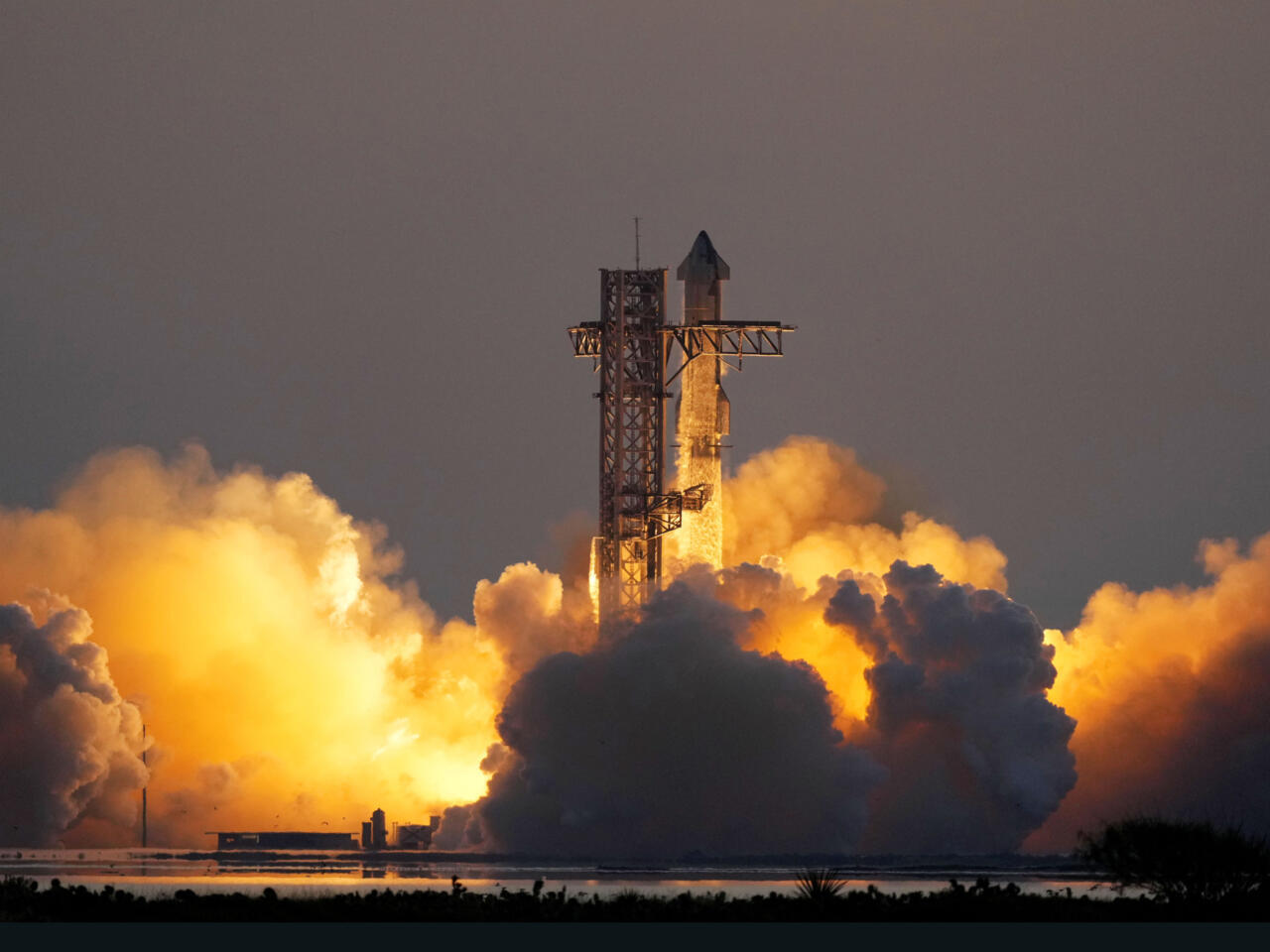SpaceX has always been synonymous with bold ambitions, and the latest SpaceX Starship news has captured the imagination of space enthusiasts worldwide. On Tuesday night, after several disappointing failures in earlier attempts.
Elon Musk’s giant Mars rocket finally delivered what many hoped for a successful test flight that reached space and returned safely to Earth. The mission wasn’t just a technical achievement it was a powerful signal that SpaceX’s vision of taking humanity to the Moon and Mars is back on track.
Failure has never been a stranger to innovation, and SpaceX has lived through its share of fiery endings. Starship’s previous test flights saw explosions, incomplete orbits, and landings that ended in massive fireballs. Critics wondered if Musk’s dream was too ambitious.
But history has shown that failure is often a necessary stepping stone to progress. For instance, NASA’s early Apollo program faced similar setbacks, including the tragic Apollo 1 fire. Yet those failures laid the groundwork for the Apollo 11 Moon landing in 1969.
In the same vein, each failed Starship attempt provided engineers with vital data data that ultimately enabled the near perfect performance seen during this 10th test flight.
As Todd Harrison, senior fellow at the American Enterprise Institute, noted, They appeared to achieve all of their test objectives. I think this puts SpaceX back on track. His words reflect not just relief but renewed confidence in the program’s direction.
Industry experts are calling this moment a turning point. NASA, which has invested heavily in Starship as its future lunar lander for the Artemis program, now sees its faith being validated.
Dr. Laura Forczyk, a space industry analyst and founder of Astralytical, explained in a recent interview, This flight was critical not only for SpaceX but also for NASA’s timelines. Every successful test reduces uncertainty about whether astronauts will be able to safely land on the Moon by the mid 2020s.
Moreover, aerospace engineers stress that the reusability of Starship is just as significant as its size. Unlike traditional rockets that are discarded after a single use, Starship aims to be fully reusable, drastically lowering the cost of space exploration.
This principle is what turned Falcon 9 into the workhorse of modern spaceflight, and now Starship may scale that vision to interplanetary missions.
NASA’s Reliance on Starship
To understand the real world importance of this success, we must look at NASA’s Artemis program. NASA plans to return humans to the Moon for the first time since 1972, and Starship has been chosen as the Human Landing System.
This is no small responsibility. Billions of taxpayer dollars are tied to the program, and international credibility is on the line. A delay in Starship could mean delays in Artemis.
Which would frustrate not just American ambitions but also those of international partners, including Europe, Japan, and Canada. NASA’s reliance on SpaceX is comparable to its trust in Boeing during the early days of the Shuttle program.
While Boeing eventually delivered, delays and technical challenges showed how risky such dependencies can be. This recent test flight, however, eases those concerns and reinforces why NASA chose SpaceX agility, innovation, and the ability to learn fast from failure.
For ordinary people watching from the sidelines, the latest SpaceX Starship news feels like a reminder of humanity’s enduring curiosity. Social media was flooded with excitement as thousands tuned into live streams, cheering as the rocket ascended and landed without incident.
Take the story of Miguel Alvarez, a college student studying aerospace engineering in Texas, who stayed awake all night just to witness the test. Seeing Starship make it back safely felt like watching the future unfold in real time, he said.
For young dreamers like Miguel, these milestones aren’t just technical they are deeply personal, fueling ambitions and career choices. Even for skeptics, there’s an undeniable sense of awe.
The image of a massive rocket soaring into space and returning intact is powerful proof that what once seemed like science fiction is becoming reality.
The nearly flawless 10th test flight doesn’t mean the challenges are over. SpaceX still has to prove Starship can handle the extreme conditions of deep space, including multiple launches, landings, and eventual human passengers.
Safety remains the biggest hurdle, especially given the enormous size and complexity of the rocket. Financially, the stakes are equally high. Musk has admitted that Starship development costs billions of dollars annually, with profitability still uncertain.
Yet SpaceX’s business model, built on contracts with NASA and private satellite launches, has created a financial cushion. If Starship lives up to its promise of full reusability, it could revolutionize space economics in the same way low cost airlines revolutionized air travel.
Moreover, international competition is heating up. China has announced ambitious plans for its own Moon missions, and other private companies are entering the commercial space race. In this context, SpaceX’s success is not just about technology but also about maintaining America’s leadership in space exploration.
A Giant Step Toward Mars
The latest SpaceX Starship news is more than just another test flight it’s a signal to the world that humanity’s path to the Moon and Mars is becoming clearer. By combining bold vision with relentless trial and error, SpaceX has proven once again that failure is not the opposite of success but a part of it.
As we look ahead, the possibilities are extraordinary. Imagine a future where Starship carries not just astronauts but also scientists, engineers, and even ordinary people beyond Earth’s orbit.
That future feels closer today than it did yesterday. And for Elon Musk, NASA, and the rest of us dreaming of the stars, this is not the end it’s just the beginning.

